10 Big Differences Between The Annihilation Book And Movie

Warning! The following contains MAJOR SPOILERS for both the Annihilation book and movie. You don't want either to be spoiled for you so only read on if you're ready to break down these trippy experiences.
Following his 2014 directorial debut, Ex Machina, Alex Garland is continuing to push unsettling, thought-provoking science fiction in his sophomore film effort. This time, he took on adapting the first chapter of Jeff VanderMeer's Southern Reach Trilogy, titled Annihilation. The eco-horror novel is an eerie, atmospheric experience that requires a healthy imagination and a high tolerance for nightmares. What it is not, is easily adaptable to film. As such, the translation to the big screen requires some major changes and omissions to the source material. The differences between Jeff VanderMeer's book and Alex Garland's Annihilation are many, so feel free to fill in what I missed in the comments, but here are ten of the biggest differences.

The relationship between Lena and Kane is much more loving in the film. In the novel, the biologist and her husband had been drifting apart for some time. There is no mention of an affair, but the two were just going through the motions. Also, in the books, the biologist's husband was recruited and volunteered for the mission, which caused even more strife in their crumbling marriage. When her husband returns from Area X an empty husk, the biologist is actually the one who contacts the authorities to come take him away.
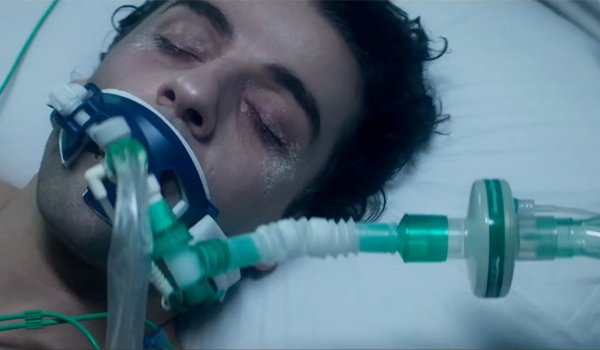
The reason Lena goes into Area X is not the same. In the books the biologist's husband died from cancer after returning from Area X, and before her own expedition. She has always been fascinated with ecosystems and just felt qualified and compelled to go. She even mentions that her husband's participation in the 11th expedition is in many ways irrelevant to why she signed up. Quite frankly, the biologist in the book is not a particularly sympathetic character. She is quite emotionless and light on personality. The film works better in this regard, giving Lena a real driving force behind joining the mission and more emotional weight to her journey. This helps the filmgoing audience to relate to her, and be more invested in her fate.
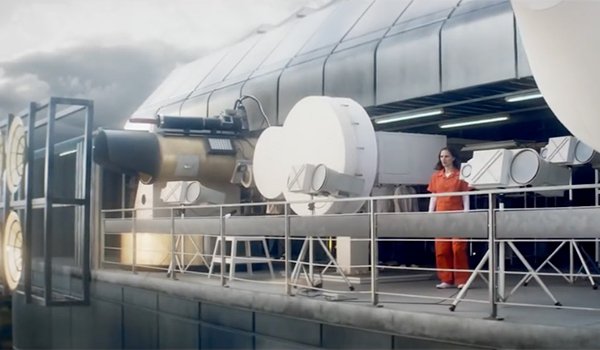
Who knows what, and when they know it, changes the equation. In the movie, Area X and The Shimmer are government secrets that the public is unaware of, whereas in the book, people know about Area X but are unsure of much else, kind of like Area 51. In the film, Dr. Ventress (Jennifer Jason Leigh) tells Natalie Portman's character how long the expeditions have been going on, what methods they have tried, and their various speculations about the nature of the phenomenon. Lena and the rest of the team have a clearly defined objective (get to the lighthouse and the source) and are equipped with all of the knowledge available. Everything is more clandestine in the book, with members of the expedition, and the reader, only being told as much as they need to know, which isn't much. This is all part of mixing up variables and treating the teams as guinea pigs. Also, the revelation that The Shimmer is expanding is told to Lena at the beginning of the film, but it is hidden from her for most of the book.
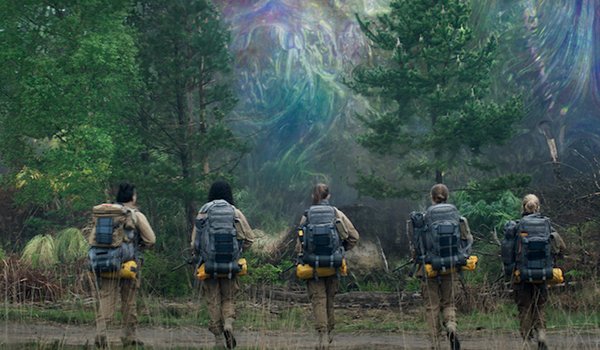
We get to see the border of Area X. In the film you actually get to see the border of The Shimmer. This is new for the film, as is that name (it just goes by Area X in the books). The characters never get to really see the border of Area X in the novel, and are told not to look back once they go in. At one point, the biologist looks back anyway in the direction they came from and only sees a sort of indistinct haze far behind her, but nothing like the iridescent field that clearly marks the boundary of the area in the film. This was a great addition to the film that was aesthetically fascinating and managed to be cooler than the mystery in the book.

The expedition team and their dynamic is much more friendly. In the book, there are four members versus five in the film. They are immediately distrustful of one another and contentious in Jeff VanderMeer's novel. They know that previous expeditions have ended in hails of gunfire, as members turned on one another, so they are extremely wary of their colleagues. They also are told in advance to watch each other and document each other's behavior, creating a dynamic of constant suspicion. In Annihilation, we get to see a bit of camaraderie between the group. They share drinks before the expedition, and have real conversations like the one between Lena and Cass. This approach by the film allows the audience to actually invest in the members of the expedition and their fates, and makes later betrayals more unexpected and emotional.
Your Daily Blend of Entertainment News

There is no hypnosis in the film. The psychologist is a hypnotist in Jeff VanderMeer's novel, and this plays a large role in the book. The other members of the expedition are aware, and have consented to being hypnotized. They are told this is to help keep them calm crossing the border, but the psychologist also uses it throughout the book to coerce the other team members into doing things or agreeing with her planned course of action. One of the suggestive commands is actually "Annihilation," which is programmed to have the subject help induce suicide. I'm not surprised this didn't make it in. There was enough weirdness for the audience to have to noodle around in their heads without hypnosis being added to the mix.

You get a much better idea of what is happening, and the cause, in the film. That isn't to say that the why is explained, but thanks to Tessa Thompson's character, we learn that the DNA of all life within Area X is being refracted, mimicked and copied onto all other life. You also get to clearly learn that the source of The Shimmer/Area X is extraterrestrial in origin. The book gives no such explanation, and the method of infection is different. Lena inhales spores early on in the book, creating a change inside of her that she is aware of but doesn't understand. Also, the source of the anomalous region is never revealed, although it is suspected to be not of this world.

The horrible deaths of each of the team members are different. In the movie, Gina Rodriguez' Anya Thorensen and Tuva Novotny's Cass Sheppard are both killed by the bear-like creature. Tessa Thompson's Josie Radek just walks off and disappears into the environment, completely assimilated into The Shimmer. Finally Jennifer Jason Leigh's Dr. Ventress is annihilated until no part of her remains. The deaths in the book are equally disturbing, but different. The anthropologist is hypnotized into getting herself killed and the psychologist, infected in some way, is compelled to jump off of the top of the lighthouse. The surveyor falls prey to madness and paranoia, and tries to kill the protagonist who winds up killing her instead. So yeah, Tessa Thompson's character in the movie is the only one who gets a peaceful death.
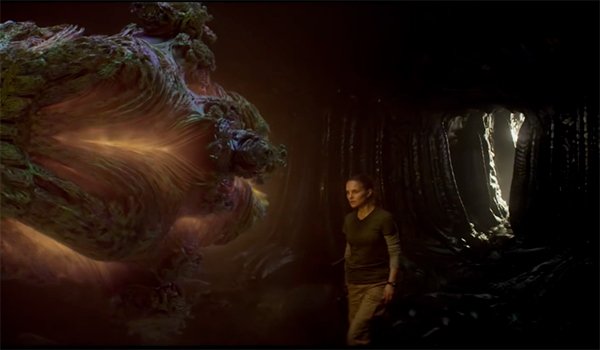
The roles of The Tower and The Crawler are greatly reduced. The hole in the lighthouse and the amorphous extraterrestrial creature at the end of the movie are Alex Garland's representation of the book's most unfilmable elements, but their role is small in comparison. If you are wondering whether or not the book could possibly be weirder than the movie, well, let me explain. In the book, the team discovers an underground structure that Lena dubs 'The Tower.' The book centers around this location. The tower has walls that seem to breathe as if alive, and a spiral staircase that descends into the earth. There resides a shapeless creature of unknown origin, called The Crawler, that writes indecipherable poetry on the walls of the tower using tiny organisms as ink. So yeah, unfilmable. Fortunately, I think Alex Garland was able to convey the point of these things without having to put something on film that might not have worked visually.
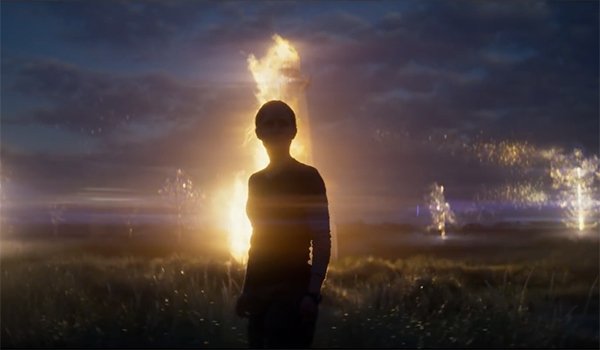
The ending of the film is completely different. The ending of Alex Garland's Annihilation is a beautiful nightmare of ambiguity. There is a lot to dissect with this ending and you can check out Eric's breakdown to get into the nitty gritty of it. But seemingly, Lena destroys the source of The Shimmer at the lighthouse and eliminates the threat posed to by it. She returns to something that looks like Kane, but isn't, and she herself may not be Lena anymore, at least not fully.
In the novel, she finds a journal of her husbands in the lighthouse, saying that he is going up the coast and taking a boat to a nearby island, and that she can find him there. Even though he is seemingly dead, she sets out towards the island to follow him. She does not fight a copy of herself or set off any phosphorus grenades. This ending also holds a fair bit of ambiguity but it leaves the threat of Area X and it's effect on the landscape intact.
Annihilation is in theaters now. What did you think of this experience? Are you still processing it? And did the film inspire you to check out the book if you hadn't already?
Nick grew up in Maryland has degrees in Film Studies and Communications. His life goal is to walk the earth, meet people and get into adventures. He’s also still looking for The Adventures of Pete and Pete season 3 on DVD if anyone has a lead.

